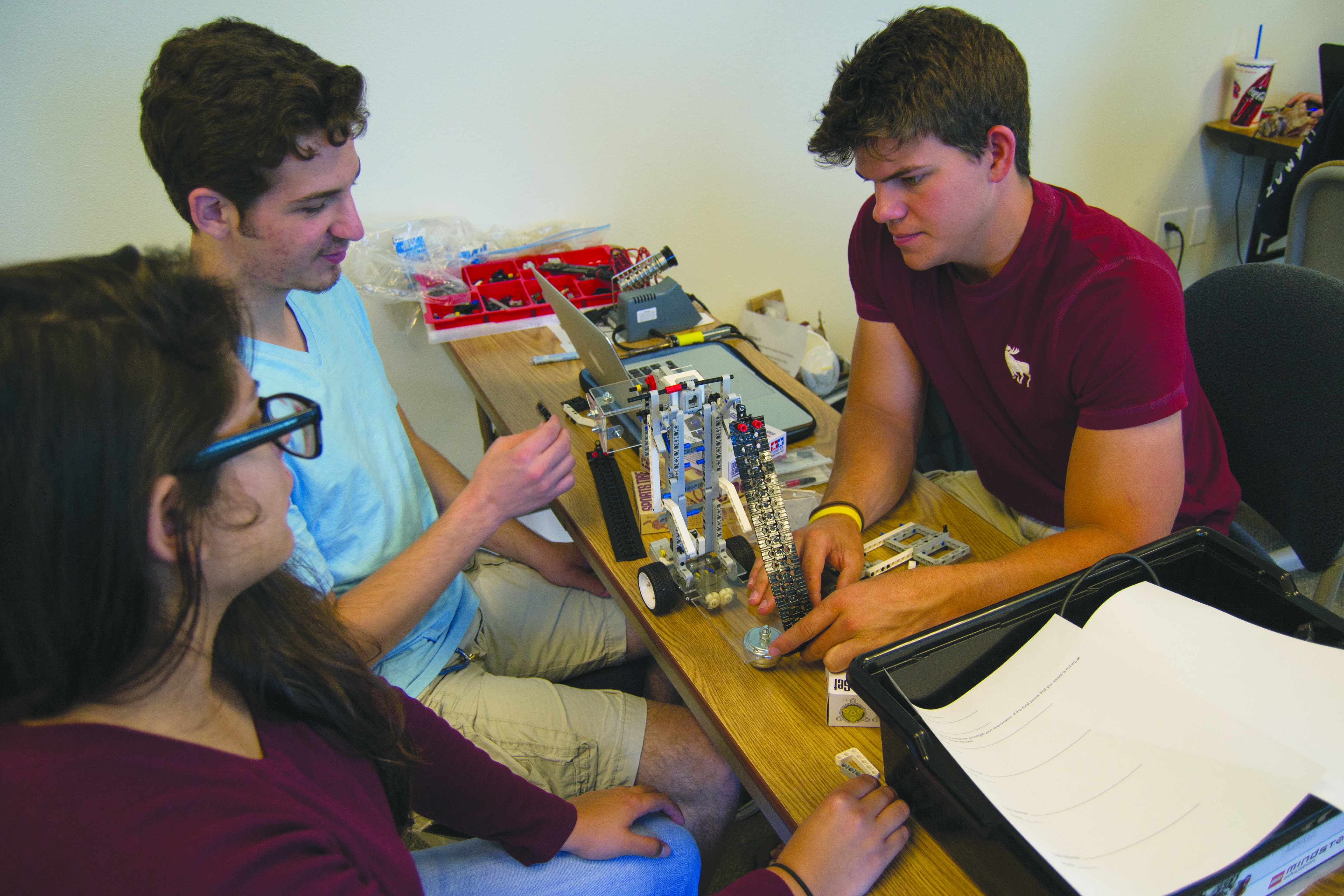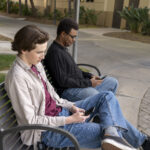
From left to right, Eva Martinez, freshman bio-medical engineering major, Ivan Garcia, junior mechanical engineering major, and Micah Cassianni, freshman mechanical engineering major work on the design of their machine to improve its performance and better assist the rest of their class section’s team. Randy Plavajka | Banner
LEGO bricks are more than just a medium for children; the plastic bricks, gears and accompanying programs are able to serve more mature purposes at California Baptist University in ways that were not possible in past years.
CBU’s Gordon and Jill Bourns College of Engineering is known for being hands-on. The course EGR 102, Introduction to Engineering Basics, provides an interactive environment for engineering students to grasp the topics and subjects they are studying.
The class utilizes LEGO products in the classroom to better connect students with the concepts being taught. The majority of the semester is spent on one project where each class, usually made up of around 12 students, is its own team tasked with designing and building unique machines.
“Using the LEGOs just gives a real-world application of how engineers create things and design things,” said Blake Gordon, freshman software engineering major, who is currently enrolled in a section of EGR 102.
Each team is divided into three groups that are each given the task of designing a machine capable of conveying, transporting or sorting small items using the LEGO kits.
Students enrolled in the course make use of the Mindstorm line of LEGO products to produce robotic mechanisms capable of navigating a game board with efficiency.
The game board is a long wooden table featuring obstacles that challenge EGR 102 students to use their machines to successfully transport all of their pieces and sort them when they reach the end of the board.
In addition to the LEGO pieces, students are also able to use a 3-D printer to create their own parts for their projects. This added element helps teams make parts that may not exist within the kits.
“(LEGO Mindstorm kits) help them quickly prototype something and build in an about an hour,” said Dr. Mark Gordon, assistant professor of mechanical engineering and bio-engineering. “In previous semesters’ courses, prototype development and redesign would often take a larger amount of time that could have been better spent testing and reworking the model.”
The Mindstorm products contain a programmable computer that is able to move gears, levers and bricks when given proper instructions.
The plastic parts and pieces have to be connected to the “brain” of the machine in order to make it work properly.
Gordon teaches a section of EGR 102 where the plastic bricks are used to design and build machines capable of ordinary errands. This process instructs students how to properly enact a design that will solve problems on paper and in the real world.
“The programming for LEGO Mindstorm is a lot easier,” Gordon said. “Students are able to better understand the flow of programming.”
The engineering program relies on the educative capabilities of LEGOs to turn concepts into working projects. It is an interactive teaching tool that helps students learn as individuals and in a group setting.
“I find it very enjoyable using LEGOS in a design class as that is what the whole philosophy of LEGO is built around,” said Cameron Schaefer, sophomore electrical computer engineering major and EGR 102 lab assistant. “LEGO is a very flexible medium of design, especially when using Technic and Mindstorm pieces.”


